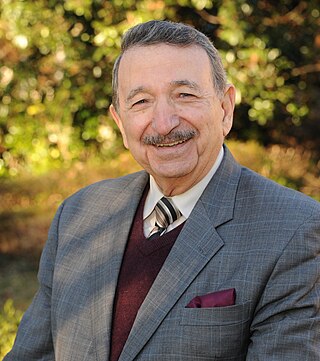
Mostafa A. El-Sayed is an Egyptian-American physical chemist, a leading nanoscience researcher, a member of the National Academy of Sciences and a US National Medal of Science laureate. He was the editor-in-chief of the Journal of Physical Chemistry during a critical period of growth. He is also known for the spectroscopy rule named after him, the El-Sayed rule.

Richard Neil Zare is the Marguerite Blake Wilbur Professor in Natural Science and a Professor of Chemistry at Stanford University. Throughout his career, Zare has made a considerable impact in physical chemistry and analytical chemistry, particularly through the development of laser-induced fluorescence (LIF) and the study of chemical reactions at the molecular and nanoscale level. LIF is an extremely sensitive technique with applications ranging from analytical chemistry and molecular biology to astrophysics. One of its applications was the sequencing of the human genome.
Lithium superoxide is an unstable inorganic salt with formula LiO2. A radical compound, it can be produced at low temperature in matrix isolation experiments, or in certain nonpolar, non-protic solvents. Lithium superoxide is also a transient species during the reduction of oxygen in a lithium–air galvanic cell, and serves as a main constraint on possible solvents for such a battery. For this reason, it has been investigated thoroughly using a variety of methods, both theoretical and spectroscopic.
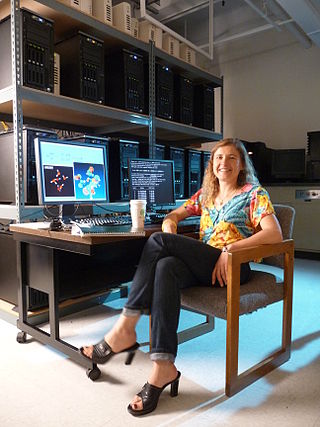
Anna I. Krylov is a Professor of Chemistry at the University of Southern California (USC), working in the field of theoretical and computational quantum chemistry. She is the inventor of the spin-flip method. Krylov is the president of Q-Chem, Inc. and an elected member of the International Academy of Quantum Molecular Science and the Academia Europaea.
For the painter, see Robert Field (painter)
Robert George Bergman is an American chemist. He is Professor of the Graduate School and Gerald E. K. Branch Distinguished Professor Emeritus at the University of California, Berkeley.

Krzysztof "Kris" Matyjaszewski is a Polish-American chemist. He is the J.C. Warner Professor of the Natural Sciences at the Carnegie Mellon University Matyjaszewski is best known for the discovery of atom transfer radical polymerization (ATRP), a novel method of polymer synthesis that has revolutionized the way macromolecules are made.
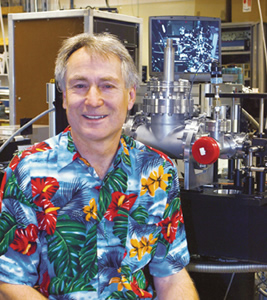
Richard James Saykally is an American chemist. He is currently the Class of 1932 Endowed Professor of Chemistry at the University of California, Berkeley. He has received numerous awards for his research on the molecular characteristics of water and aqueous solutions.

Donald Gene Truhlar is an American scientist working in theoretical and computational chemistry and chemical physics with special emphases on quantum mechanics and chemical dynamics.
Veronica Vaida is a Romanian-American Chemist and Professor at the University of Colorado Boulder. She is an expert in environmental chemistry and aerosols.

Debbie C. Crans is a Professor of Organic, Inorganic and Biological Chemistry and of Cell and Molecular Biology at Colorado State University, where she also is a Professor Laureate of the College of Natural Sciences. Crans specializes in the fundamental chemistry and biochemistry of drugs, with particular focus on vanadium and other transition metal ions as metals in medicine and investigation of their mechanisms of toxicity.
Saundra Yancy McGuire is the Director Emerita of the Center for Academic Success and a retired Professor of Chemistry at Louisiana State University. She is best known for her work on science education, having written several papers and books on the subject. Her interests focus on improving student learning by involving faculty in metacognitive learning strategies.
Hind Al-Abadleh is a professor of chemistry at Wilfrid Laurier University in Waterloo, Ontario, Canada. She studies the physical chemistry of environmental interfaces, aerosols and climate change.
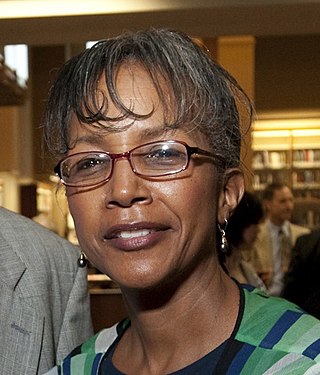
Sharon Loretta Haynie is an American chemist who develops biocatalysis for green chemistry. She is a Fellow of the American Chemical Society. Haynie was the first woman to be awarded the NOBCChE Henry Aaron Hill Award in 2006 and the first woman to win the Percy L. Julian Award in 2008.
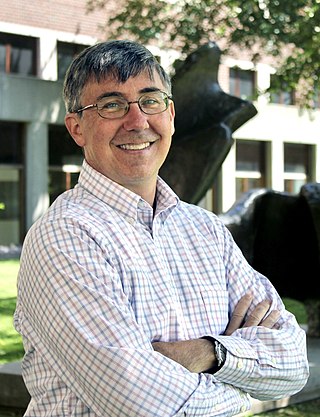
William H. Green Jr., is a Hoyt C. Hottel Professor of Chemical Engineering at the Massachusetts Institute of Technology, working in the field of chemical reaction engineering.
The Percy L. Julian Award was first given in 1975 by the National Organization for the Professional Advancement of Black Chemists and Chemical Engineers (NOBCChE). The award is given every one to two years. It honors black scientists who have made significant contributions to the areas of pure or applied research in science or engineering.
Jennifer G. Murphy is a Canadian environmental chemist and an associate professor at the University of Toronto. She is known for her research how air pollutants such as increased reactive nitrogen affect the global climate.
Anne B. McCoy is a theoretical chemist. She is the Natt-Lingafelter Professor of Chemistry at the University of Washington, and her research interests include vibrational spectroscopy, hydrogen bonding, and charge-transfer bands.
Hilkka Inkeri Kenttämaa is a researcher in organic and bioorganic mass spectrometry, and the Frank Brown Endowed Distinguished Professor of Chemistry at Purdue University. She is a pioneer in distonic radical cation research and laser-induced acoustic desorption.

William A. Lester, Jr. is an American chemist who is a professor of the graduate school at the University of California, Berkeley. He was awarded the National Organization for the Professional Advancement of Black Chemists and Chemical Engineers Percy L. Julian Award in 1979 and elected a Fellow of the American Association for the Advancement of Science in 2001.










